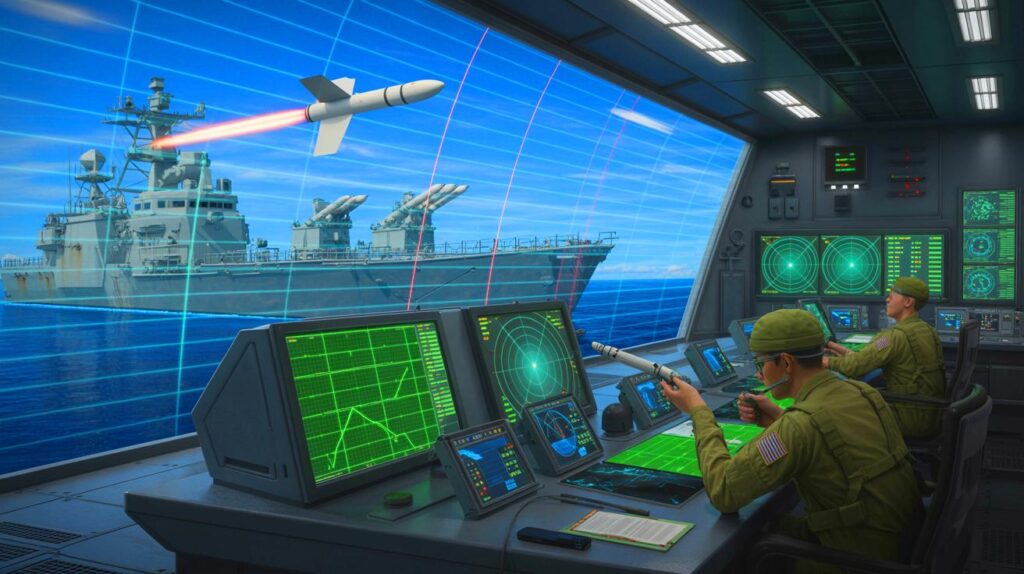| In Brief |
|
The technological development in defense has reached a new milestone with the successful test of a next-generation interception missile system in the United States. Designed to counter hypersonic missiles, this system represents a significant advancement in national security. The test, conducted by the Missile Defense Agency in collaboration with the U.S. Navy, marks a critical turning point against evolving global threats.
A Revolutionary Test: FTX-40 and the Rise of Stellar Banshee
Recently, the test, named Flight Test Other-40 (FTX-40) and dubbed Stellar Banshee, was not just a simple exercise. It was a complex simulation involving the launch of a Standard Missile-6 (SM-6) against a high-speed target mimicking a hypersonic missile threat. This operation was not merely a show of firepower, but also a test of precision, integration, and communication among sophisticated systems under extreme stress.
At the heart of this exercise was the Hypersonic and Ballistic Tracking Space Sensor (HBTSS), a space asset providing real-time tracking data. By integrating this information into the ship’s Aegis weapon system, the Navy demonstrated near-perfect synergy between space technology and naval combat systems.
Tackling the Hypersonic Challenge Head-On
Hypersonic weapons, capable of traveling at over five times the speed of sound, present unique challenges due to their speed and maneuverability. Conventional missile defense systems were not designed to handle them. According to Major General Heath Collins, director of the Missile Defense Agency, “our ability to defeat maneuvering hypersonic missiles is crucial.” This test shows significant progress in that direction.
Not only did the system accurately detect and track the target, but it also successfully simulated an interception. This marks an essential capability to defend both the national territory and American forces stationed abroad against these unpredictable threats.
Integration in Action: A Seamless Defense System
The strength of this test lay not only in the missile itself but in the seamless integration of multiple defense components, including fire control systems, space sensors, and warships equipped with Aegis. This inter-platform coordination is vital for creating a truly layered missile defense system.
The simulation also served as a risk-reduction test for the new target technology and prepared for an even more advanced test, the upcoming FTM-43 mission. These trials follow the success of previous tests like FTM-32, where a Navy destroyer demonstrated the ability to intercept medium-range ballistic missiles using an SM-6.
Learning from the Past to Prepare for the Future
FTX-40 is part of a broader trajectory of defense innovations. Tests like Stellar Laelaps have paved the way for current advancements, increasing confidence in using SM-6 interceptors against a variety of aerial threats. Each test not only generates data but also momentum, bringing American defenses closer to operational readiness in the face of a rapidly changing threat landscape.
These exercises are not just about spectacular explosions; they are about building a resilient defense network capable of adapting in real-time, regardless of the threat.
Why It Matters for the Future of Defense
As military technology becomes increasingly complex, the systems designed to neutralize it must also evolve. This is where innovation comes into play. From space-based sensors to smooth communication among military branches, the United States is investing in a future where speed of response and precision are paramount.
This test is more than a technical victory. It sends a message to allies, adversaries, and citizens that the United States not only recognizes evolving threats but is prepared to confront them with tools designed for the next era of warfare.
In a context where geopolitical tensions rise, defending against hypersonic missiles is not just a military objective, it is a national priority. As FTX-40 demonstrates, the future of defense may already be here.
As technological advancements redefine national security, how will these innovations transform our approach to defense in the future?







